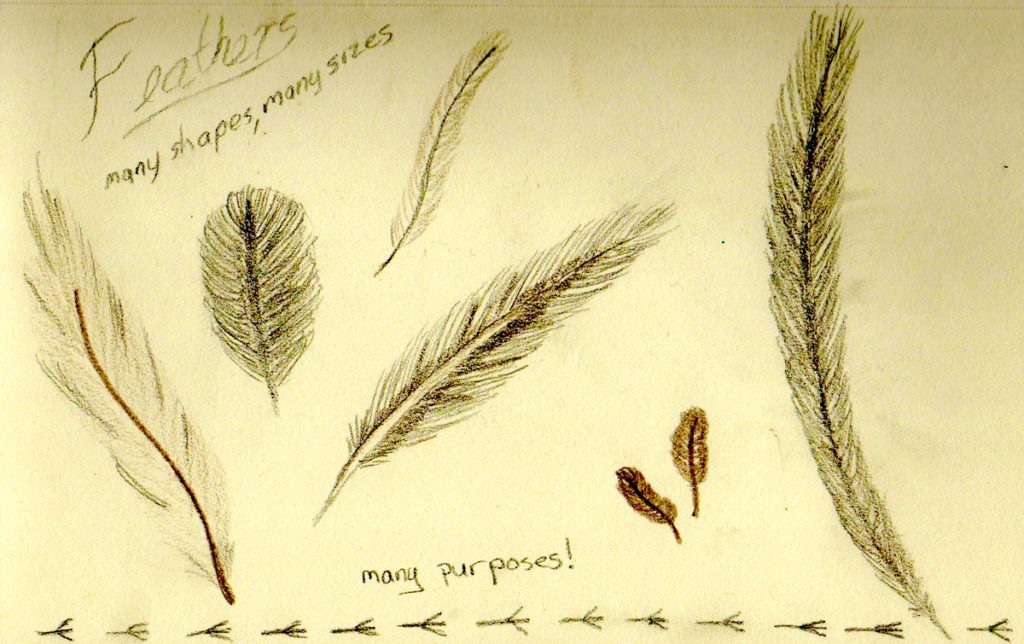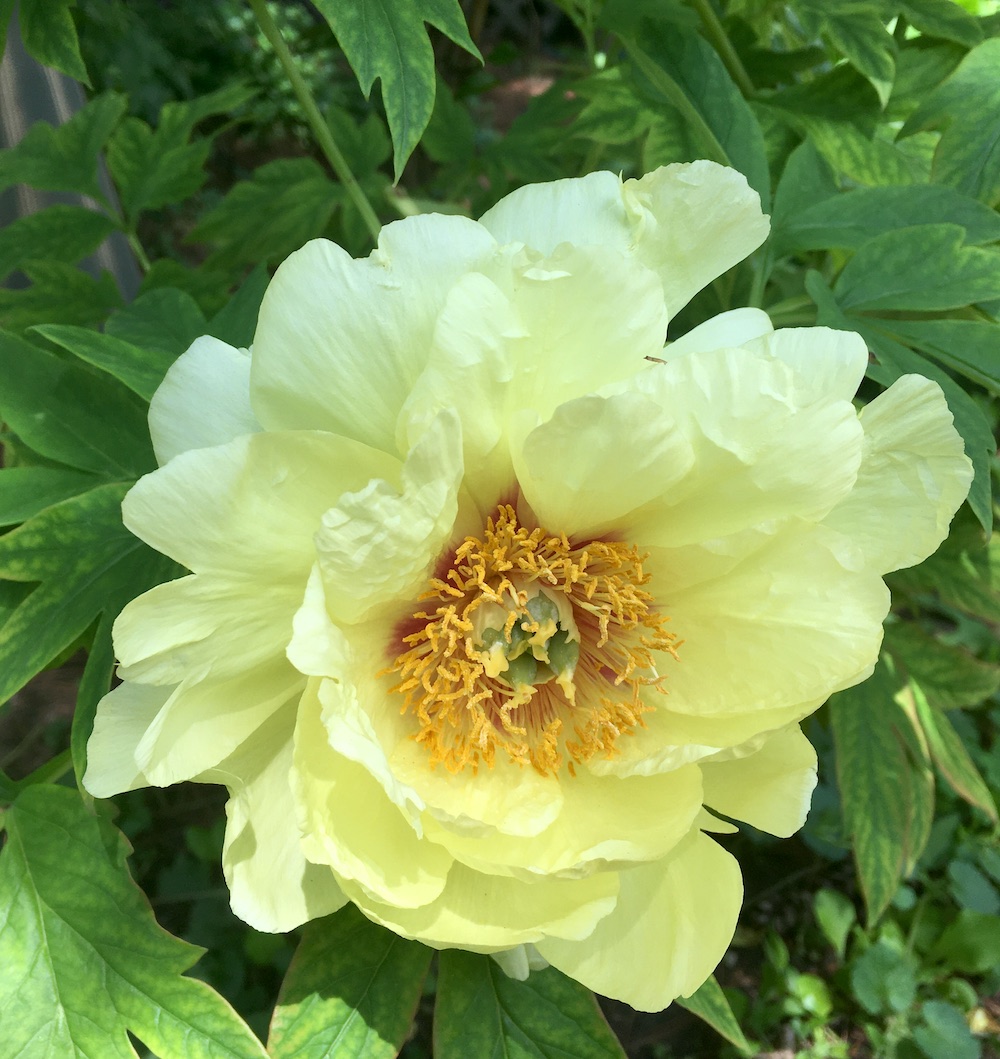
And just like that, it’s summer.


And just like that, it’s summer.
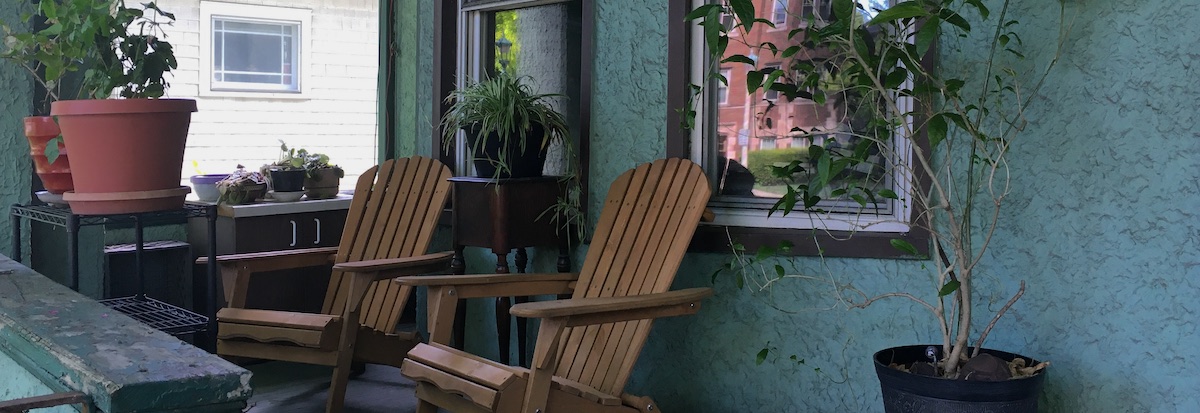 This week, I learned to identify opossum scat. This happened one morning when I took my dog out to the back yard and discovered that some unidentified creature had been hanging out on the lower portion of my deck long enough to poop. And poop quite a lot, actually.
This week, I learned to identify opossum scat. This happened one morning when I took my dog out to the back yard and discovered that some unidentified creature had been hanging out on the lower portion of my deck long enough to poop. And poop quite a lot, actually.
So of course I grabbed my handy internet device and did a quick search on “opossum scat.” This was a good guess on my part, as it turns out. Opossum scat, in fact, it was.
This was just one aspect of my natural history education and experience this week. For me, it’s one of the advantages of sheltering at home. I spend a lot more time in my own yard then ever before—and I’m a person who has always liked my yard. In addition to my close encounter with opossum scat, I also met a new-to-me insect and, I believe, two new-to-me birds.
The name common yellowthroat is for me either misleading or a slap in the face. I’ve lived in Illinois my whole life, a good portion of that in rural Illinois, and never to my knowledge seen one before. Common? Pfui!
I think one reason I’m seeing birds I’ve not noticed before is that I’m spending a lot more time on my front porch. I’ve always been a back yard person, but I think I’m craving public space, and the front porch is as close as I can get. So I’ve set up Adirondack chairs, plants, and even a metal shelving unit, and my front porch has transformed into my new “front room.”
This is especially handy for me when it’s raining, as I love watching a storm and breathing storm-fresh air. Getting wet is usually a deterrent, but now I can do it with a roof over my head.
When it’s not raining (and I’m not working), I sit in my new “front room” with a book, and read and watch the world carry on. I’ve learned that a different collection of birds frequent my front and back yards. In back, we have lots of robins, cardinals, goldfinches, house finches, and sparrows. The side yard is preferred by the mourning doves, and occasionally we get a Cooper’s hawk looking for a meal.
In front, though, I have all of the common back yard birds plus more. So far, in just the last couple of weeks, these have included a pair of wrens, an occasional nuthatch, the two birds mentioned above, one grey specimen with white belly that I’ve yet to identify, and my first hummingbird of the season. I also have a catbird.
Let’s talk about catbirds a bit—because this is my very favorite front yard visitor to date. That might seem odd, because catbirds aren’t particularly uncommon. But they’re very friendly. I would even say sociable. Also, they tend to return to the same breeding ground year after year, so a catbird friend is a kind of friend for life.
I really became familiar with catbirds a few years ago when one befriended me in my back yard. I would sit on my back deck reading for hours on end during the weekend, and this catbird started hanging out with me. He’d perch less than 6 feet away and chip at me for such a long time that I would just stop what I was doing and talk to him. Far from being frightened, he’d just chatter back. I didn’t see him the next year, so it’s quite possible that he didn’t survive the winter. This is the first year I’ve had another catbird since then, and I’m hoping to make another fast friend. Already he perches with 10 feet of me and chirps. And it’s only May; we have the whole summer ahead of us.
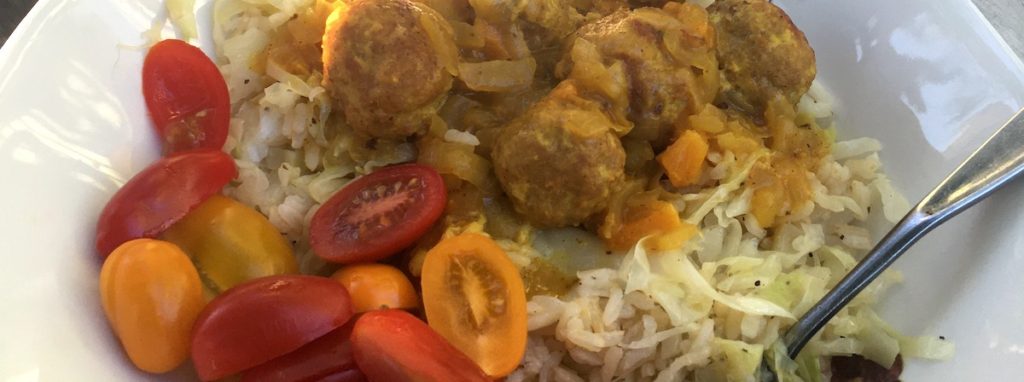
Today I’m reading cookbooks. I’m inspired by having just spent the last two weeks working my way through a fine book of food writing: The Reporter’s Kitchen: Essays by Jane Kramer. It doesn’t usually take me two weeks to read a book, but one of the hallmarks of good food writing is that I savor it rather than gobble it up voraciously.
I nibbled The Reporter’s Kitchen a chapter at a time, pausing often to menu plan, cook, bake, and borrow and read cookbooks. I have three borrowed cookbooks on Hoopla as a result, along with a list of dishes from Kramer’s own repertoire that I’m planning to find recipes for and try. Among these:
Those are all fall/winter foods, so it will be some time before I give them a try. In the meantime, I’ve been finding and experimenting with other new recipes, while also pulling out some of my standby favorites. My husband and I have feasted on all manner of simple delights in the last couple of weeks, including sautéed spinach both with and without pine nuts; pasta in many varieties, most often including grape and cherry tomatoes sautéed just long enough to start to wilt; pub burgers with mushrooms and black olives; fish with whatever seasonings seemed right; sesame noodles; a lovely salad of green beans, cucumbers and basil with lemon vinaigrette; slaws both new and old; apple cake; derby chocolate chip cookies; and no-bake peanut butter cookies.
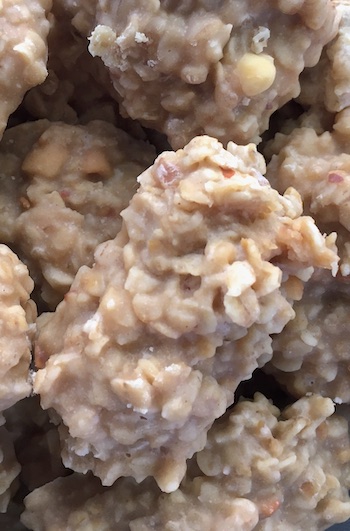
I’m working on (as in eating) some of those peanut butter cookies now, which means I’m thinking about my mother. This was one of her recipes, and I suspect it came from a peanut butter jar because I’ve come across at least one other person who was raised on exactly this same cookie but didn’t have the recipe from his mother and asked for mine. It’s dead simple with just six ingredients, and it’s the only cookie I make all summer long because…no baking. As I associate this with my mother, I suspect that my son and probably his friends will associate it with me.
Food traditions are a comfort to me. My mother’s and grandmother’s recipes call them to my mind, and recipes handed to me by friends never cease to summon memories of those friends when I make them. Holidays for me are interchangeable with the food I eat to celebrate them, and I think I would sooner skip Christmas entirely than celebrate it without my family’s traditional Swedish-based meal.
In general, my tastes in food differ vastly from my mother’s. I was raised on a diet of meat, potatoes, and vegetables cooked well beyond an inch of their lives. Aside from the vegetables, my mother was an excellent cook. But my adult tastes lean more toward pastas, rice, lighter (or no) meats, and steamed or grilled vegetables. I’ve inherited or retained my mother’s taste for fish, though, along with memories of standing next to her fishing along a riverbed. I’ve also inherited those recipes, some of which—her lentil soup, for example—I will enjoy till my dying day.
“Letters are souvenirs of love,” says the headline on the newspaper article I read weeks after it was published.
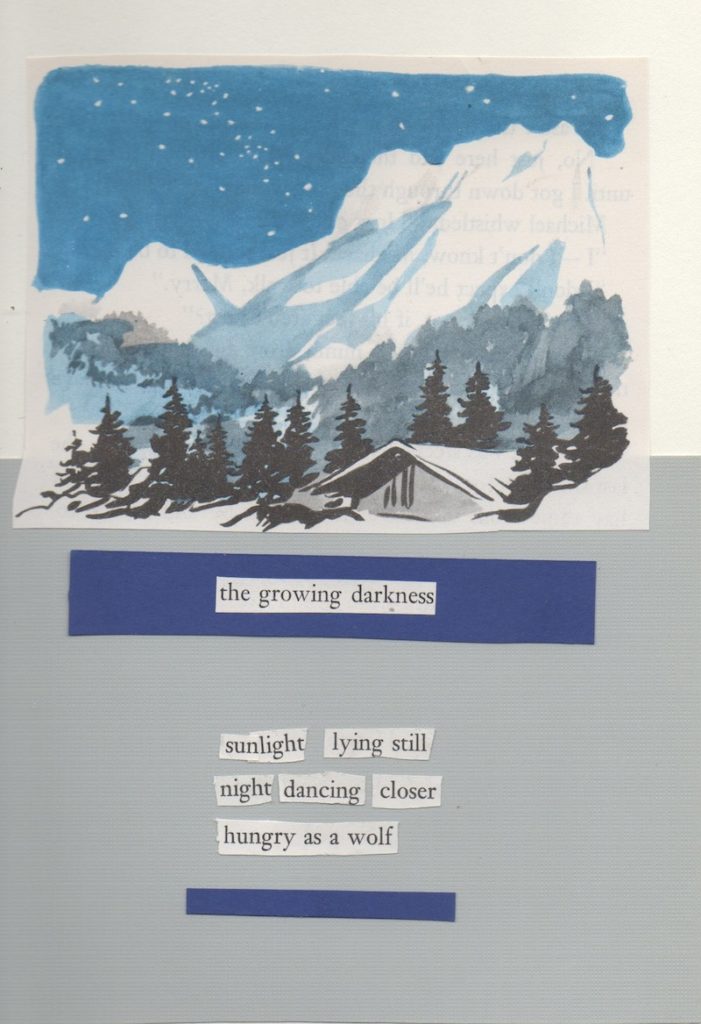
I wrote four postcards today, and yes I think love was one of the reasons. Letter writing of any sort tells a person you’re thinking of them, they’re special, and you want to connect with them—specifically them, not just anyone.
I used to write long letters when I was younger, before I married and had a kid and got busy, busy busy. I’ve lost the habit, but the postcards and cards I’ve been sending lately might be a first step toward getting it back. I rather hope so, both because I value that personal form of communication as a recipient and because letter writing can be meditative for me. To write to someone about my life and my world is to think about my life and my world. Doing so with pen and paper takes a little longer than email and feels more…intentional, I think. The fact that I write emails all day for work might be another factor in favor of pen and paper for me.
The meditative nature of letter writing is only one reason why I’m doing it these days. The other reason—indeed, the primary one—is because I believe in the inherent value of and need for public mail delivery. The U.S. Postal Service is under threat, and we need it. Using it is a small way for me to show my support.
I’ve started seeing signs in support of mail carriers on doors and windows in my neighborhood, so I know I’m not alone. I’m pleased to see these essential workers getting some thanks and praise for continuing to do their work in this trying time. I do know someone who doesn’t properly appreciating them, though: Old Dog, aka Rolo. Like many dogs, she doesn’t welcome the mail carrier to our door (unless you consider furious barking and growling a welcome). That’s OK, though. Our mail carrier knows and waves to her as “my friend” when we see him on our walks in the neighborhood.
Of course, we stay safely on opposite sides of the street from one another while we wave.
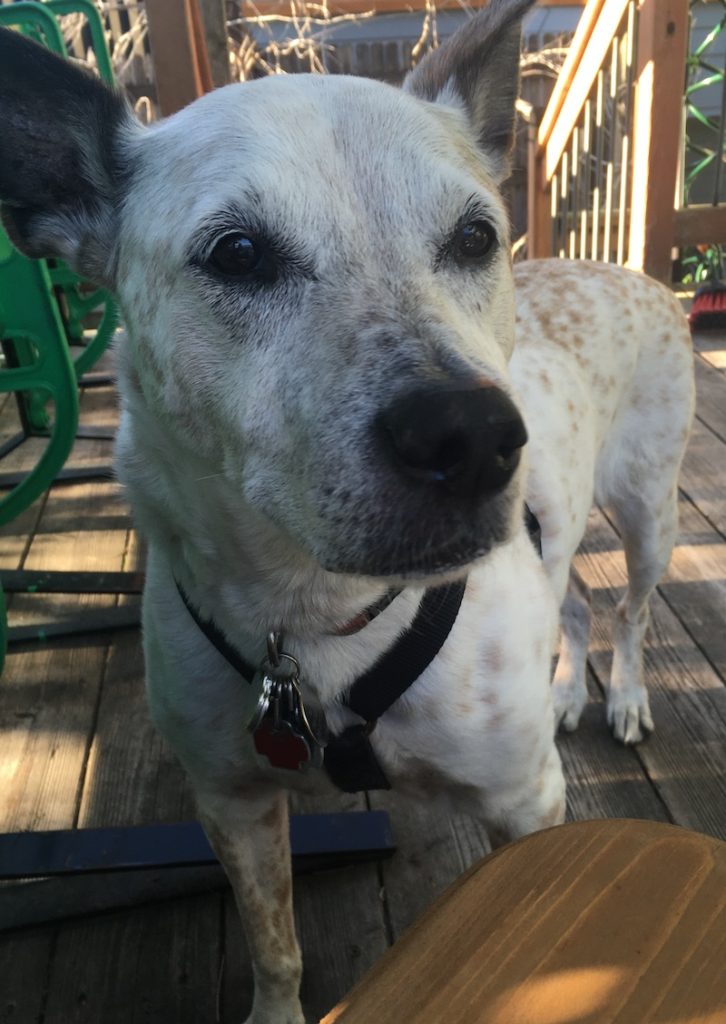
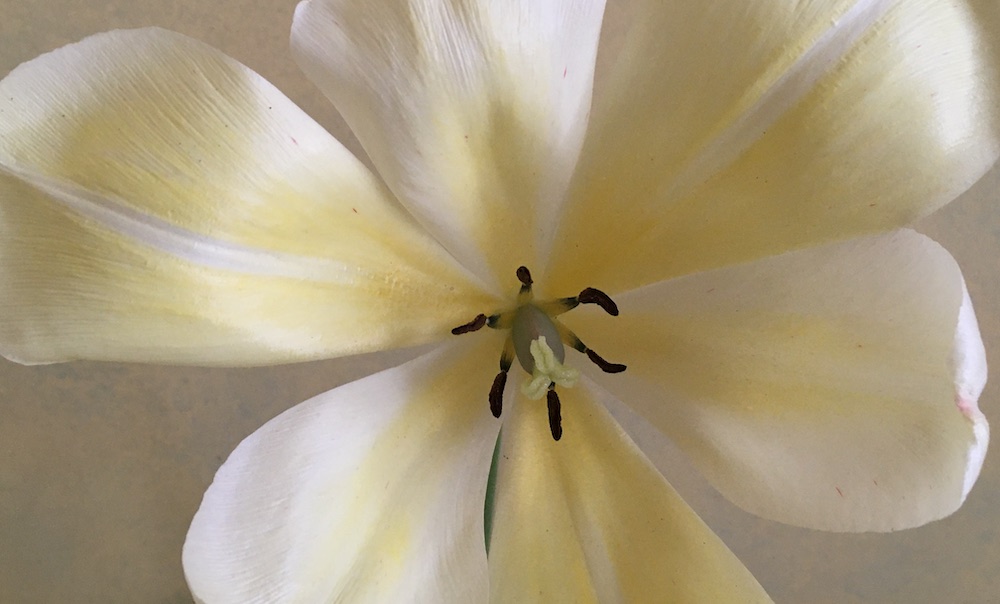
I call this tulip a whore every year. It grows up tall and elegant in the garden, willowy and waving gently in a breeze. Then I bring one inside, and eventually it splays itself wide open for all the world to see what it’s got.
I love this tulip.
I don’t recall its name, but every year it adds graceful beauty to my outdoor garden and then puts on a garish, boastful display indoors. That’s this year’s picture above. Here’s last year’s:
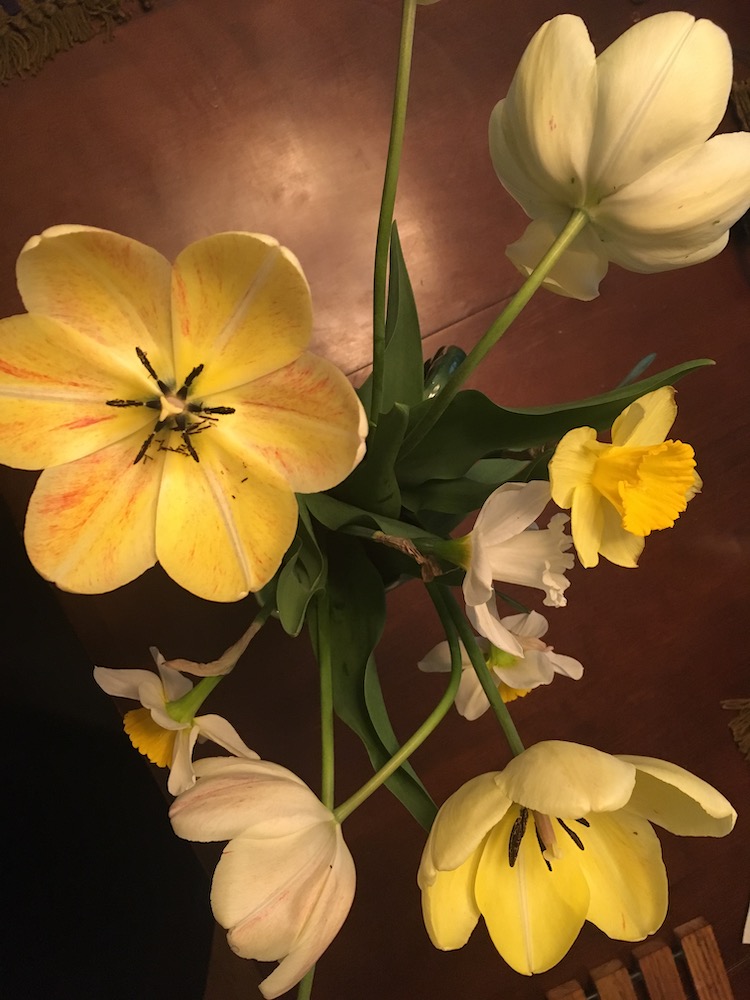
I’m pretty sure if I looked back further in my photo archive I’d find something similar for the past 10 years, or for however long it has been since I ordered these bulbs and put them in the ground.
These guys are nearing the end of their bloom time this year, and the lilacs are chasing close behind them. Come to think of it, lilacs are equally boastful in their own way, bathing themselves in a perfume you can smell down the block. Nothing subtle, but ecstasy to inhale.
Today on Mother’s Day, I celebrate the whores of my garden.
I just started reading a book of food writing, and all I can think about is food. I’ve only an introduction and one essay into The Reporter’s Kitchen, by Jane Kramer, and already I’ve made chicken salad, am planning dinner, and have borrowed two cookbooks from my library (thank you, Hoopla!).
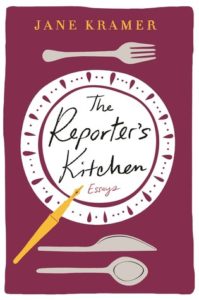
Kramer is The New Yorker‘s European correspondent, but what’s important here is that she also has written about food over the years. The Reporter’s Kitchen is a compilation of those essays. I read The New Yorker only irregularly and wasn’t familiar with Kramer’s writing before this book caught my eye at the library (you know, back in the day when libraries were buildings you could walk into). So far I’m a fan. Even Kramer’s introductory essay had me starting to think about ingredients in my kitchen, and that might be the best response possible to food writing.
Tonight’s menu will take shape around some sort of pasta with tomatoes, kalamata olives, and probably green beans. I’m thinking about sautéed spinach on the side, and I also have an urge to bake. That’s as far as I’ve gotten.
I’m looking forward to a summer and fall filled with great cooking made possible by garden-fresh ingredients from the brand-spankin-new raised bed my husband just built for me. It’s 16 feet long and will hold everything from tomatoes and beans to cabbage and kalettes (aka kale sprouts). We took delivery of 4 cubic feet of soil this week and have spent the last three days moving it wheelbarrow by wheelbarrow into its new wood-framed home. I’m tired and a bit sore, but oh so happy I could write a poem.
Mineral-black soil,
Fertile, dark promise rich with
possibility
Or something like that. I’m reading a lot of poetry while sheltering in place, particularly after treating myself to a birthday purchase of books delivered direct to my door not by Amazon but by the distributor(s) for my local independent bookstore, which is able to continue bringing in income with this service while not able to open its doors. My order included three books of poetry, and I’m making my way through them slowly, savoring and re-reading.
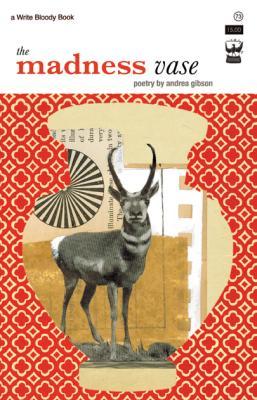
My current obsession is The Madness Vase, by Andrea Gibson, one of my favorite poets. These poems are powerfully strong, anthems of survival shot through with vulnerability. They celebrate life without ever pulling punches, and I can’t get enough of them. That has been pretty much the case for me with every book of Gibson’s poetry I’ve ever picked up, and if you’ve never read any … well, I think you’re missing out.
I’ve seen Gibson in performance as well, and they’re equally powerful on stage. Here’s a collection of videos of their performances—don’t miss.
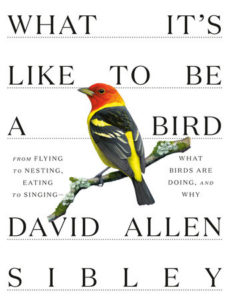
Also included in my bookstore purchase was an enormous hardcover book, What It’s Like to Be a Bird, by David Allen Sibley. This one, too, is a joy, not meant to be read cover to cover but intended rather for wanderlust reading, choosing your own topic and following it wherever it takes you.
One place It took me was to my drawing pad, after reading about wings inspired to draw feathers of all varieties. I sense years of enjoyment ahead of me from this book, reading and re-reading, learning about different aspects of birds’ lives, reminding myself how and why they fascinate me.
Spring is a good time for reading about birds, when I also can sit on my front porch or back deck and watch them in the trees and at the feeders. That’s where I’m headed now, probably with a book.
